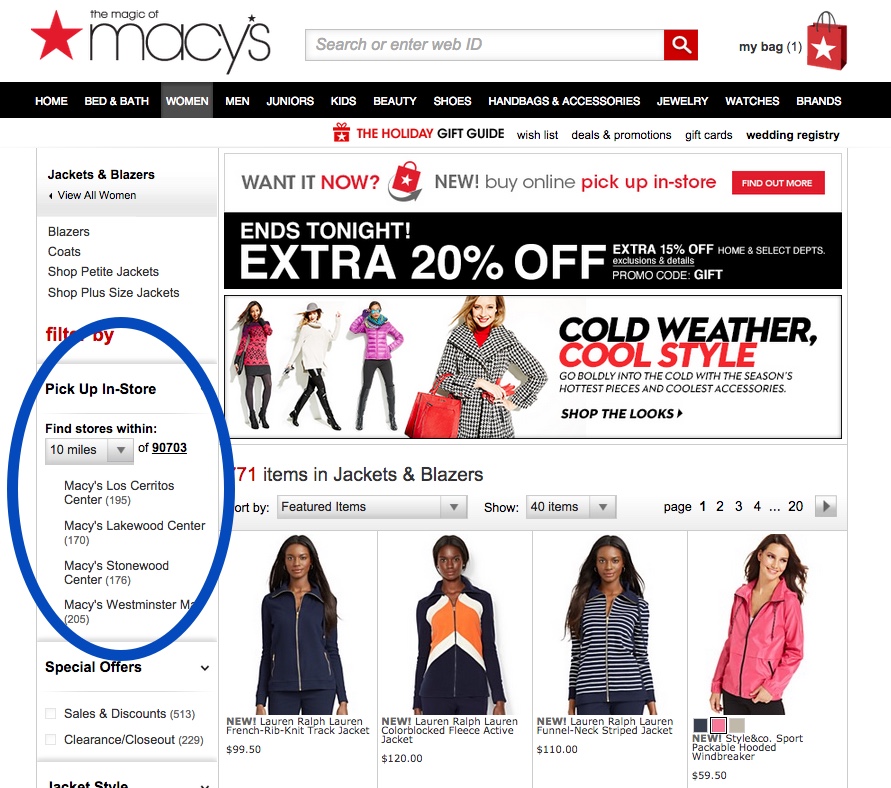We don’t need a crystal ball to see that the future of retail involves frictionless shopping experiences. Today’s consumers (and those in the near future) want not only to shop across multiple channels (i.e. online, mobile, brick-and-mortar), but to do so quickly and seamlessly.
That’s why retailers who want to keep up with the times should make the shopping journey smooth and convenient for their customers.
It’s important to identify the bottlenecks or friction points that hinder shoppers from finding and buying the products they need quickly. This post will help, by shedding light on four common issues that make shopping difficult. Check them out below and see if you have any of these bottlenecks in your business:
#1 The disconnect between physical and digital channels
The biggest “friction point” in retail sits at the intersection of your digital and physical storefronts. While more and more merchants are bridging the gap between online and offline channels, plenty of retailers (particularly in the SMB realm) still haven’t addressed the physical-to-digital divide—and it’s costing them business.
Don’t be one of them. Eliminate this issue by linking your digital and physical storefronts. If you have online, mobile, and brick-and-mortar shops, set up integrations that ensure data-sharing between channels so your customers can research and shop across multiple platforms.

One retailer doing this well is Macy’s, which lets shoppers browse their local branch’s inventory online so they can try on or pick up items in the store.
But it doesn’t stop there. Macy’s also offers a similar capability through mobile. AdAge reports that when a customer Googles an item using her mobile device, she’ll be able to check that item’s availability at a nearby Macy’s location. According to AdAge:
Beginning in November, shoppers can search for an item on their phone and see what’s stocked at their nearest Macy’s location. Alongside the images are product details like price, size and color, directions to the store, and a link to the item on the retailer’s website. The program works with Google’s proximity marketing platform in an effort to drive sales in stores and online during the biggest shopping season of the year.
Check out how it below:
Now, you don’t have to be a retail giant like Macy’s to provide your customers with a similar experience. By selecting sales and inventory tools that integrate well with one another, you will enable your customers to shop, find, and buy items across multiple platforms.
Take, for instance, Bird On a Wire in Auckland, which lets customers place orders online or via mobile, then gives them the option either to pick up their purchase in-store, or have it delivered.
It does this by integrating its POS system (Vend) with its ordering service (Mobi2Go). The two services “talk” to each other, allowing Bird On a Wire to ring up customers and process their orders, no matter what device or channel they’re using.
Vend Tip – To learn how you can do this in your store, check out our previous post, The Savvy Retailer’s Guide to Online and Mobile Ordering, Store Pickup, and Same Day Delivery.
#2 Slow order fulfillment
Just as important as letting customers shop and browse on their own terms is enabling them to get their hands on their purchases however and whenever they want. Slow or limited order fulfillment diminishes the shopping experience (and curtails sales), which is why retailers need to develop more flexibility and creativity in fulfilling orders.
Besides offering an in-store pickup option, look for other ways to get products into your customers’ hands. Some retailers, for instance, let shoppers pick up their items without leaving their cars. Target is currently testing curbside pick-up, whereby shoppers simply drive by Target to pick up items they’ve purchased via an app.
Same-day delivery is also making waves in the retail realm, with Google and Amazon offering such services. Fortunately, small- to medium-sized retailers can follow their lead. For instance, Rare Device, a design store and gallery in San Francisco, offers same-day delivery to local customers through a service called ShoppinPal. Like Bird On a Wire, Rare Device offers this option by integrating its point-of-sale system with its delivery service provider.
#3 Product unavailability
Losing customers because certain items aren’t available through a particular channel or store branch? Fret not. You can get rid of this friction point by streamlining your inventory management.
Set up a system that enables you to track stock levels across all your stores and selling platforms. Most cloud-based POS systems offer this capability, either through built-in features or through integrations with inventory tools such as Stitchlabs.
A modern inventory set-up can monitor stock across multiple channels, showing you what products you have and where you have them, making it easy for you to locate the items your customers are asking for.

One retailer implementing this well is New York & Company. If a customer can’t find the color or size that she wants in a particular branch, the store can find the item and then ship it directly to her doorstep.
Apparel retailer Oasis also offers this service in its stores, because its associates can order items on behalf of customers who can’t find what they’re looking for. On top of that, the retailer also provides a related service on its ecommerce site. When an item isn’t available online, Oasis will hunt down the product in its brick-and-mortar locations, and send it directly to the shopper.
A modern inventory system will even prevent availability issues in the first place, by determining which products are in demand at a particular location or channel, thus alerting you to maintain stock levels accordingly.
#4 Cumbersome checkout processes
Long lines and clunky, inefficient point-of-sale systems are bottlenecks that curb sales and make ringing up customers unnecessarily cumbersome. Get rid of such systems and you will speed up the checkout process.
Depending on the type of store you have, there a number of options:
a. Adopt a modern POS system – If you’re still using an old-fashioned cash register, upgrade to a cloud-based point-of-sale system that runs on your computer or mobile device.
In addition to being considerably faster than your typical cash register, mobile POS systems let you send receipts via email and untether the checkout process so you can ring up shoppers anywhere in the store. This eliminates long lines and improves traffic flow in your location.
Have a look at what Medisave, an internet-based medical supplies company, did at an industry trade show they attended. Medisave sold stethoscopes at their booth, but to save space and time they deployed “walking POS people” armed with iPads, lanyard scanners, and printer belts.
This kept the hectic crowds moving, so people could get back to their conference agenda as quickly as possible.
“We could walk the line during busy times and go to the customer rather than them pushing through the crowd to get to the counter. Plus, credit card transactions were integrated directly into the process, and that cut our checkout time in half,” said Graham Wright, managing partner at Medisave.
b. Upgrade your loyalty program – Physical loyalty cards are on their way out. They’re a hassle to carry and they add time and effort to the checkout process.
As Chain Store Age puts it, “A typical rewards card scenario involves the customer finding their card, taking it out of their wallet, scanning it, and putting it back. And if they happen to forget their card, they miss out on the chance of earning loyalty points. Those barriers add friction and time to the checkout process and can lower customer satisfaction.”
Address this by adopting a mobile- or POS-based loyalty program. Vend, for example, lets you track rewards and offer perks right from the app itself—no cards required.
For a richer rewards experience, consider using a service like Collect, which connects retailers directly with their customers via smartphone. Collect lets retailers issue personalized offers and it has some cool analytics features that create measurable campaigns and gain more insights into your customers.
c. Consider mobile payments – Mobile payments can speed up the checkout process considerably. Payment solutions such as Apple Pay, Google Wallet, and CurrentC let customers pay using their mobile device, without having to fumble with cash or credit cards. There are also contactless payment services such as the one offered by PayPal, which enable retailers to ring up customers who “check in” to their store, so they won’t even have to take out their ID or credit card.
Mobile payments are about to get bigger, so keep your eye on the space and do your research. Talk to your customers, ask them which mobile payments solutions they use, and if it makes sense for your business, see if you can accept them in your store.
Bottom Line
We hope this post prodded you to examine your business and identify any bottlenecks that are causing headaches for shoppers. Needless to say, if you find any of these issues in your customers’ shopping journeys, take the steps to eliminate them. Sure, doing so will require changes and maybe a bit of an investment, but if you execute correctly, you’ll not only keep your existing customers happy, but you’ll also be setting up your store for success in the future. Good luck!

